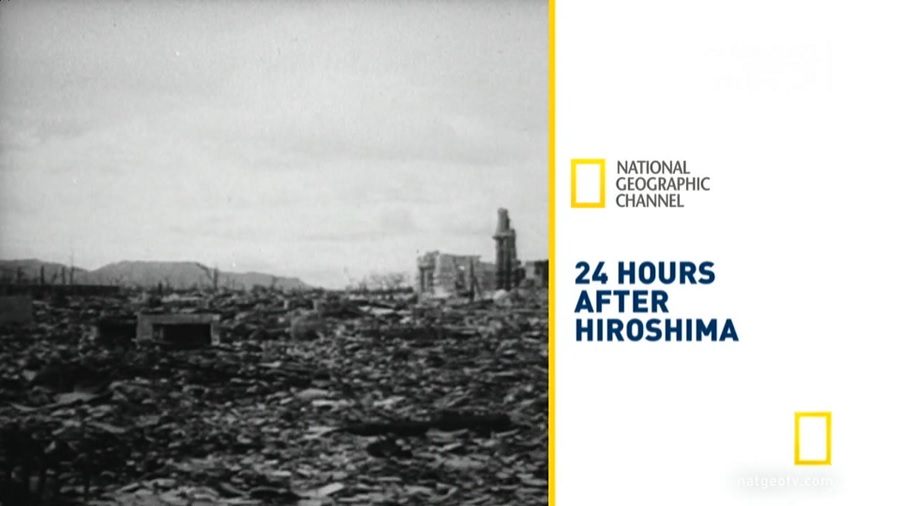24 Hours after Hiroshima: The atomic bombing of Hiroshima, on August 6, 1945, was a moment that changed the world. Power that fueled the stars had been unleashed and turned into a lethal technology. Now learn the second-by-second story of that defining moment through those hit hardest by that weapon, the survivors.
On August 6th, 1945 a weapon unlike any other before was unleashed on the Japanese city of Hiroshima. Four days later, the Japanese surrendered having been subjected to horrors and devastation previously unknown and unimaginable. But beyond the horror and human toll, real scientific questions remained unanswered. In 1945, a team of scientists and experts from the Manhattan Project was ordered by President Truman to investigate the facts of what really happened when the atomic bomb exploded over Hiroshima. National Geographic reveals the incredible science behind what happened moment by moment in the 24 Hours After Hiroshima.
Narrated by Peter Coyote, 24 HOURS AFTER HIROSHIMA uses re-creations, stock footage, and stories to piece together the act that killed/injured 129,558 people. This comprehensive look back at the catastrophic events leading up to the end of World War II includes first-hand accounts from people such as Enola Gay crew member Dick Jeppson and survivor Takashi Tanemori. Interwoven throughout the survivors’ stories, we hear from atomic bomb experts like Massachusetts Institute of Technology Professor Theodore Postol and “The Making of the Atomic Bomb” author Richard Rhodes, who draw from declassified military reports to break down the bomb’s devastating effects and the lasting implications of humanity’s newfound power to destroy the world.
24 Hours after Hiroshima
The United States detonated two nuclear weapons over the Japanese cities of Hiroshima and Nagasaki on August 6 and 9, 1945, respectively, with the consent of the United Kingdom, as required by the Quebec Agreement. The two bombings killed between 129,000 and 226,000 people, most of whom were civilians, and remain the only uses of nuclear weapons in armed conflict.
In the final year of World War II, the Allies prepared for a very costly invasion of the Japanese mainland. This undertaking was preceded by a conventional and firebombing campaign which devastated 67 Japanese cities. The war in Europe had concluded when Germany signed its instrument of surrender on May 8, 1945, and the Allies turned their full attention to the Pacific theater. The Allies called for the unconditional surrender of the Imperial Japanese armed forces in the Potsdam Declaration on July 26, 1945, the alternative being “prompt and utter destruction.” Japan ignored the ultimatum and the war continued.
Enola Gay
The Enola Gay is a Boeing B-29 Superfortress bomber, named after Enola Gay Tibbets, the mother of the pilot, Colonel Paul Tibbets. On 6 August 1945, during the final stages of World War II, piloted by Tibbets and Robert A. Lewis it became the first aircraft to drop an atomic bomb. The bomb, code-named “Little Boy”, was targeted at the city of Hiroshima, Japan, and caused the near-complete destruction of the city. Enola Gay participated in the second atomic attack as the weather reconnaissance aircraft for the primary target of Kokura. Clouds and drifting smoke resulted in a secondary target, Nagasaki, being bombed instead.
After the war, the Enola Gay returned to the United States, where it was operated from Roswell Army Air Field, New Mexico. In May 1946, it was flown to Kwajalein for the Operation Crossroads nuclear tests in the Pacific, but was not chosen to make the test drop at Bikini Atoll. Later that year it was transferred to the Smithsonian Institution, and spent many years parked at air bases exposed to the weather and souvenir hunters, before being disassembled and transported to the Smithsonian’s storage facility at Suitland, Maryland, in 1961.




